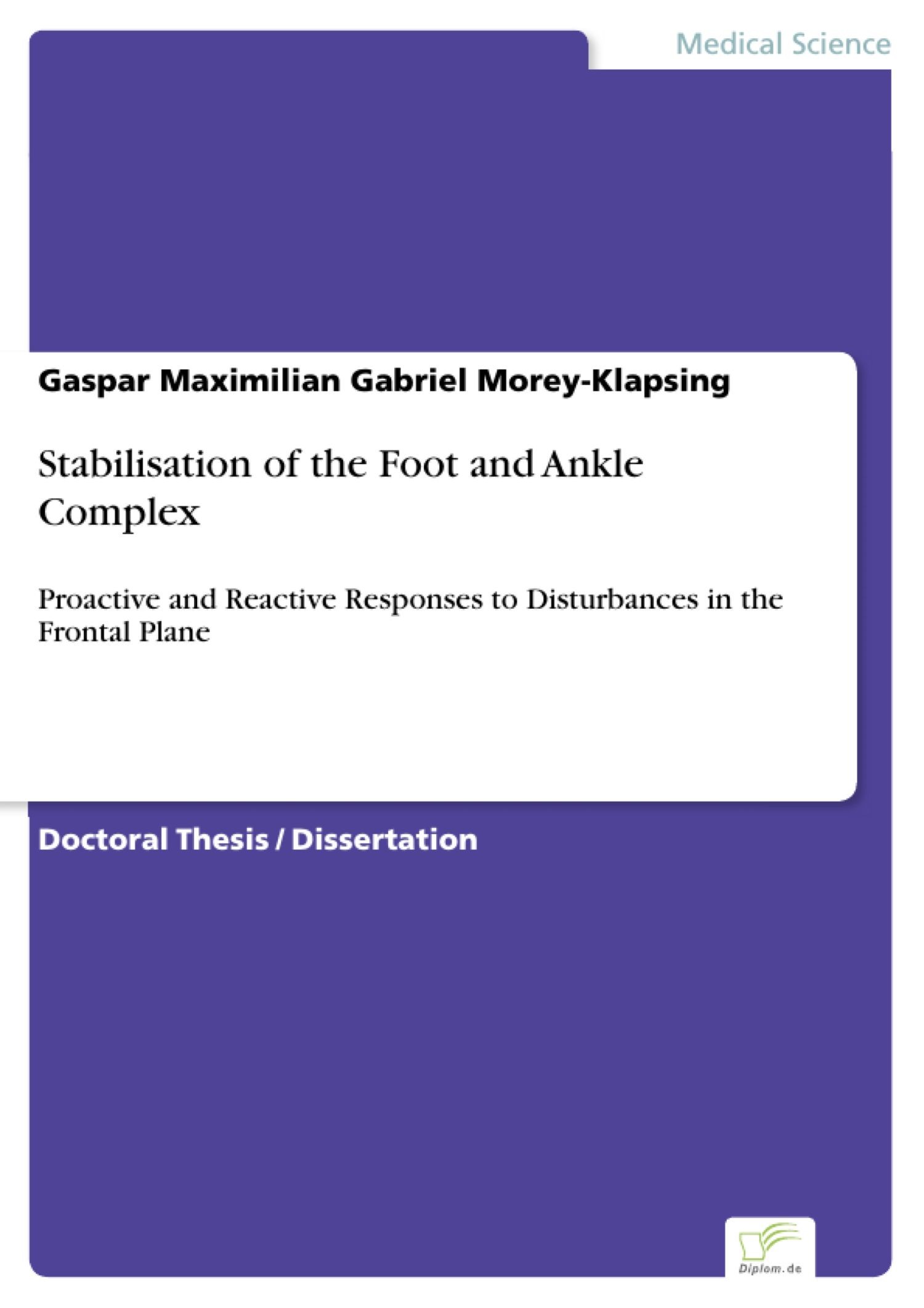Stabilisation of the Foot and Ankle Complex
Proactive and Reactive Responses to Disturbances in the Frontal Plane
| Auflage | 1. Auflage, 2005 |
| Verlag | diplom.de |
| ISBN | 9783832488352 |
Sofort zum Download (Download: PDF)
Produktbeschreibung
Inhaltsangabe:Abstract: Probably one of the main contributions of this thesis has been the use of a three-dimensional kinematic model accounting not only for ankle motion but also for the motion of the lateral and medial columns of the forefoot with regard to the rearfoot (Arampatzis et al., 2002), in a joint stability context. The obtained values may serve as reference for the planning of further studies and provide a base for building up new hypotheses. However this thesis did not aim to merely describe the kinematics but rather to provide more knowledge regarding the stabilisation of the foot and the ankle. Therefore another important contribution is surely the simultaneous study of the kinematics, the EMG and the ground reaction forces, which allows a better understanding of the whole stabilisation process. The presented results have shown that forefoot motion is fundamental in foot and ankle stabilisation. The flexibility of the forefoot, especially in the frontal plane, permits a fast and appropriate adaptation to the ground. Furthermore the high mobility of the forefoot, allows the ankle to rotate slower and to a lesser extent. Possibly this reduction in required ankle motion can contribute considerably to injury prevention, since the forces acting at the ankle are high and a misalignment with regard to the ground reaction forces could rapidly lead to moments overwhelming the stabilising potential of the involved structures. In addition, the rapid adaptation of the forefoot to the ground can potentially provide more precise and earlier feedback regarding the ground characteristics than the structures surrounding the ankle joint. This way the corresponding adjustments in an immediate feedback could happen earlier, and the consequences of future interactions could be predicted more accurately. The results from the presented studies support the notion that joint stabilisation does not rely primarily on proprioception. Prolonged peroneal latencies might in fact be due to deafferentiation consequent to the recurrent sprains. However prolonged latencies do not seem to be responsible for a functional instability. On one hand the differences in latency times between healthy and unstable ankles are relatively low and not consistently observed. Those studies identifying prolonged latencies in functionally unstable joints, report differences close to 15 ms (Konradsen and Ravn, 1990; Löfvenberg et al., 1995). Fifteen ms is a short time to have a high [...]



